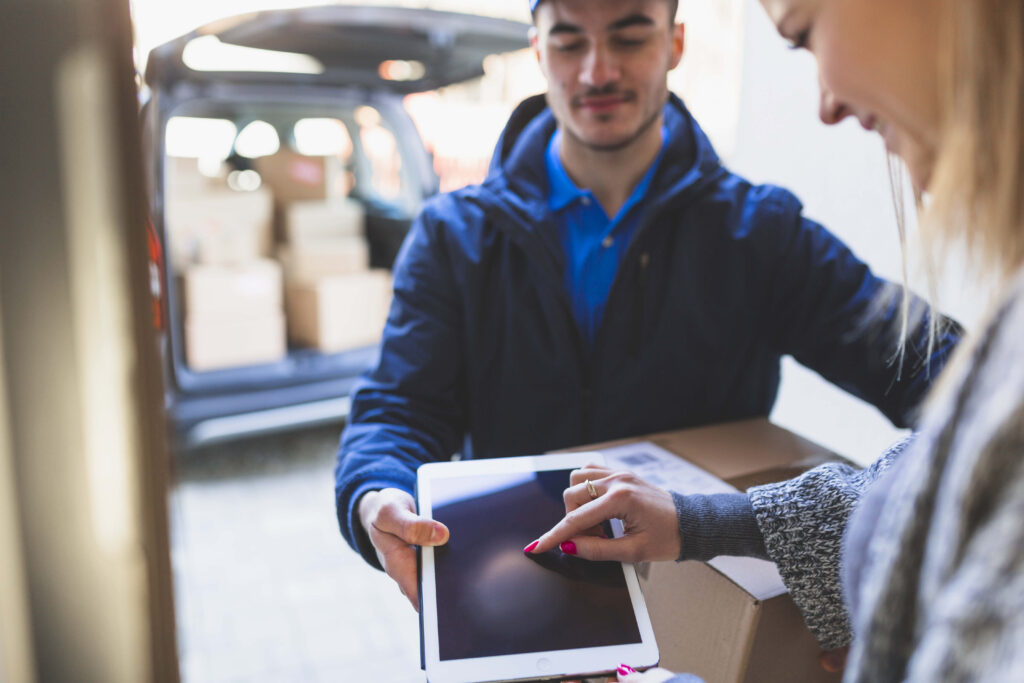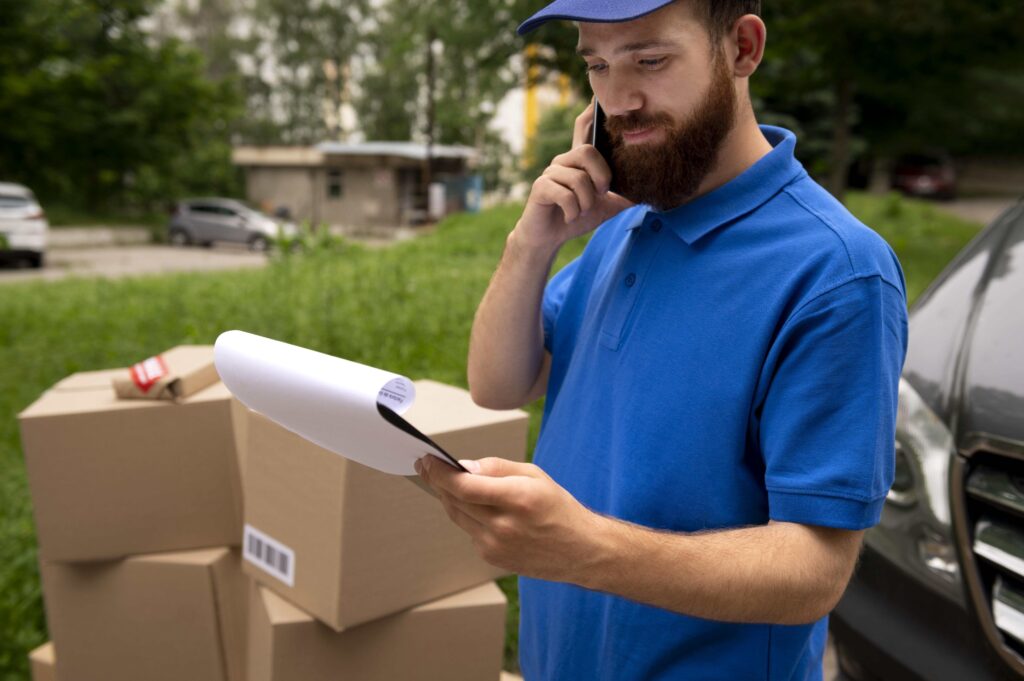What Is Hyperlocal Delivery and Why It’s the Next Big Thing
What Is Hyperlocal Delivery and Why It’s the Next Big Thing
Overview:
Hyperlocal delivery is revolutionizing the logistics industry by connecting local businesses with customers in the same area, offering unparalleled convenience, speed, and efficiency. This blog delves into what hyperlocal delivery entails, why it’s gaining traction globally, and how businesses can leverage this model to thrive in today’s competitive market. From defining its key characteristics to exploring its challenges, this guide covers all aspects of hyperlocal logistics.
The blog highlights the role of technology, including real-time tracking and predictive analytics, in enabling seamless operations. It also addresses sustainability, cost efficiency, and the empowerment of local businesses. Furthermore, the blog outlines best practices and future trends, such as drone deliveries and AI-driven insights, that are shaping the hyperlocal delivery landscape.
Table of Contents
- Introduction to Hyperlocal Delivery: A Logistics Game-Changer
- What is Hyperlocal Delivery? Definition and Key Features
- Why Hyperlocal Delivery Is Dominating Global Markets
- The Role of Technology in Hyperlocal Delivery Success
- Sustainability and Cost Efficiency in Hyperlocal Models
- How Hyperlocal Delivery Empowers Local Businesses
- Challenges Faced in Hyperlocal Delivery Operations
- Best Practices for Successful Hyperlocal Delivery
- Future Trends in Hyperlocal Delivery: Drones, AI, and Automation
- Streamlining Hyperlocal Delivery with Shipox: The Complete Solution
1. What Is Hyperlocal Delivery and Why It’s the Next Big Thing
In the dynamic world of logistics, hyperlocal delivery has become a game-changer, connecting businesses and customers within the same locality for unmatched convenience and speed. This innovative model redefines customer satisfaction by enabling faster, more efficient deliveries tailored to modern consumer expectations. Powered by cutting-edge technology and the surge in on-demand services, hyperlocal delivery is poised to shape the future of logistics, offering businesses a competitive edge in an ever-evolving market.
2. Introduction to Hyperlocal Delivery: A Logistics Game-Changer
Hyperlocal delivery has transformed the logistics landscape by focusing on transporting goods and services within a short radius, typically 1-10 kilometers. Unlike traditional logistics models that emphasize long-distance shipping, hyperlocal delivery prioritizes speed and proximity, enabling businesses to serve nearby customers more efficiently. This innovative approach perfectly meets the rising demand for on-demand and same-day delivery, now a standard expectation in today’s fast-paced commerce environment.
3. What is Hyperlocal Delivery? Definition and Key Features
Hyperlocal delivery refers to delivering goods and services within a defined radius, leveraging technology and local resources to fulfill orders quickly. Key features of hyperlocal delivery include:
- Limited Geographical Scope: Hyperlocal delivery operates within a focused radius, typically between 1 to 10 kilometers, which drastically reduces transit times. By ensuring deliveries happen within a short distance, businesses can meet tight schedules, cater to last-minute orders, and provide exceptional service to nearby customers. This localized approach creates a competitive edge for businesses looking to deliver faster and more efficiently.
- Tech-Driven Efficiency: Technology forms the backbone of hyperlocal delivery operations. Advanced systems like real-time tracking ensure that businesses can monitor deliveries from start to finish, while route optimization minimizes delays and reduces fuel consumption. Automated dispatching further streamlines the process, assigning the nearest courier to the job and reducing idle time. These tech-driven solutions not only improve operational efficiency but also enhance customer trust and satisfaction.
- Diverse Applications: Hyperlocal delivery caters to an array of industries, each with unique needs. Grocery stores leverage it to deliver fresh produce promptly; pharmacies use it to meet urgent medical requirements, such as delivering prescriptions; and restaurants benefit by offering ultra-fast food delivery to customers craving hot meals. This adaptability allows businesses across various sectors to expand their offerings, retain customers, and remain competitive in a fast-paced market.
By keeping the delivery process localized, businesses can meet customer demands for instant gratification and faster service.
4. Why Hyperlocal Delivery Is Dominating Global Markets
The rise of hyperlocal delivery can be attributed to several factors:
- Changing Consumer Expectations:
Today’s customers demand convenience and speed. A 2023 McKinsey report highlighted that 56% of consumers expect same-day delivery, with 27% willing to pay a premium for faster service. Hyperlocal delivery perfectly aligns with these expectations by leveraging local networks for rapid fulfillment. - Advancements in Technology:
From real-time tracking to AI-driven demand forecasting, technology has enabled hyperlocal delivery to scale effectively. Tools like on-demand delivery software provide businesses with the capability to operate efficiently within tight delivery windows. - Sustainability and Cost Efficiency:
Operating within a smaller radius reduces fuel consumption and carbon emissions. For businesses, this translates to lower delivery costs while contributing to eco-friendly logistics practices.
5. The Role of Technology in Hyperlocal Delivery Success
Technology is the backbone of hyperlocal delivery success. Key innovations include:
- Real-Time Tracking: Real-time tracking has become a cornerstone of hyperlocal delivery, ensuring complete visibility for both businesses and customers. With this feature, customers can monitor the progress of their orders from dispatch to delivery, providing them with accurate ETAs and building trust in the process. Businesses also benefit by identifying potential delays and resolving issues proactively, ensuring smooth operations and enhanced customer satisfaction.
- Predictive Analytics: Leveraging predictive analytics allows businesses to anticipate demand, optimize inventory levels, and streamline logistics. By analyzing historical data and identifying patterns, businesses can forecast peak hours, seasonal trends, and product demand, ensuring that inventory is stocked appropriately and delivery teams are prepared to handle surges efficiently. This data-driven approach reduces errors and enhances overall service quality.
- Automated Dispatching: Automated dispatching simplifies the allocation of deliveries, ensuring that orders are assigned to the nearest available drivers based on real-time data. This eliminates manual processes, reduces idle time, and ensures faster deliveries. By automatically optimizing resources, businesses can enhance their operational efficiency while focusing on delivering exceptional customer experiences.
Platforms like Shipox can help you and empowers hyperlocal logistics to cater to millions of customers daily.
6. Sustainability and Cost Efficiency in Hyperlocal Models
Hyperlocal delivery models are inherently more sustainable and cost-effective. Operating within a small radius reduces fuel usage and emissions, aligning with the global push for eco-friendly practices.
For businesses, this translates to lower transportation costs and reduced reliance on large fleets. SMEs, in particular, benefit greatly as they can expand their reach without incurring substantial infrastructure costs. Book a demo for more streamline process
7. How Hyperlocal Delivery Empowers Local Businesses
Hyperlocal delivery provides local businesses with the tools to compete against e-commerce giants:
- Expanding Customer Base: Hyperlocal delivery enables businesses to tap into a broader audience within their immediate vicinity. By offering on-demand services, businesses cater to the growing demand for convenience and speed, attracting customers who value quick and reliable delivery options. This approach helps small businesses compete with larger corporations by providing a unique selling point—proximity and prompt service.
- Building Community Connections: Hyperlocal logistics fosters closer relationships between businesses and their local communities. Faster, more personalized deliveries enhance customer satisfaction and build trust. These personalized interactions make customers feel valued, leading to increased loyalty and repeat business, which is vital for long-term success.
- Lower Investment Requirements: One of the most attractive aspects of hyperlocal delivery for small businesses is its cost-effectiveness. Unlike traditional logistics models that require significant infrastructure and capital investment, hyperlocal solutions can be implemented with minimal resources. Businesses can leverage existing platforms and technologies to streamline operations without the need for large warehouses or extensive fleets, making it an accessible and scalable solution.
This model allows local retailers to thrive in the digital economy, bridging the gap between traditional commerce and modern technology.
8. Challenges Faced in Hyperlocal Delivery Operations
Despite its potential, hyperlocal delivery comes with challenges:
- Operational Complexity:
Managing local vendors and delivery agents requires robust coordination and reliable delivery logistics software. - Cost Management:
Balancing operational costs with competitive pricing remains a key concern for many businesses. - Scalability:
Expanding beyond a localized area often requires additional investment in infrastructure and technology.
Addressing these challenges with the right strategies and tools is critical for sustainable growth in hyperlocal logistics.
9. Best Practices for Successful Hyperlocal Delivery
To succeed in hyperlocal delivery, businesses should adopt the following best practices:
- Invest in Technology: Implement scalable and user-friendly on-demand delivery software to streamline operations. Automation tools for dispatching, tracking, and inventory management reduce manual effort, enhance efficiency, and provide businesses with real-time insights into delivery performance.
- Build Strong Partnerships: Forge collaborations with reliable local vendors and delivery agents to ensure smooth supply chain operations. These partnerships create a dependable network that supports timely deliveries and builds trust within the community.
- Leverage Data: Utilize analytics to gain actionable insights into customer behavior, peak demand times, and operational inefficiencies. Predictive analytics helps businesses forecast demand accurately, optimize resource allocation, and proactively address challenges.
- Enhance Customer Experience: Focus on delivering exceptional service at every touchpoint. Use prompt communication, offer personalized delivery options, and resolve issues quickly to foster customer satisfaction. By prioritizing convenience and trust, businesses can build long-term customer loyalty in the competitive hyperlocal market.
10. Future Trends in Hyperlocal Delivery: Drones, AI, and Automation
The hyperlocal delivery market is evolving rapidly, with exciting innovations on the horizon:
- Drone Deliveries: Promising faster delivery times, especially in congested urban areas.
- Autonomous Vehicles: Reducing dependency on human drivers while increasing efficiency.
- AI-Driven Insights: Enhancing route optimization, demand forecasting, and customer personalization.
- Dark Stores: Localized micro-warehouses designed for rapid order fulfillment.
These advancements will shape the future of logistics, offering businesses new ways to deliver superior customer experiences.
11. Streamlining Hyperlocal Delivery with Shipox: The Complete Solution
For businesses aiming to excel in hyperlocal delivery, Shipox offers a comprehensive solution. The Shipox delivery management platform simplifies every aspect of hyperlocal logistics:
- Real-Time Tracking: Gain live updates on driver locations and delivery statuses.
- Route Optimization: Plan efficient delivery routes to save time and reduce costs.
- Seamless Integration: Easily integrate with existing systems for smooth operations.
- Customer Satisfaction Tools: Provide accurate ETAs, live notifications, and hassle-free communication.
With Shipox, businesses can overcome operational challenges, meet customer expectations, and drive sustainable growth in hyperlocal delivery.
Conclusion
Hyperlocal delivery is transforming the logistics industry by prioritizing speed, efficiency, and customer satisfaction. Businesses that embrace advanced tools like Shipox can unlock immense growth opportunities and redefine their delivery operations for the future. Book a demo for more streamline process.
Recent Blogs
[Sassy_Social_Share type=”floating” align=”right” top=”250″]



